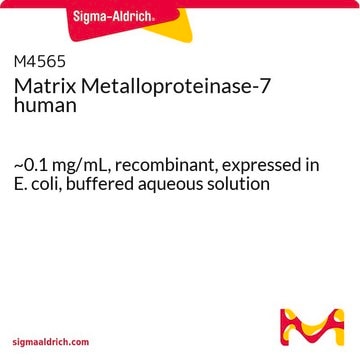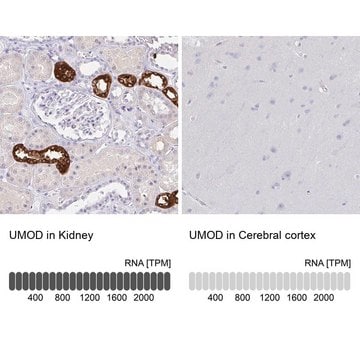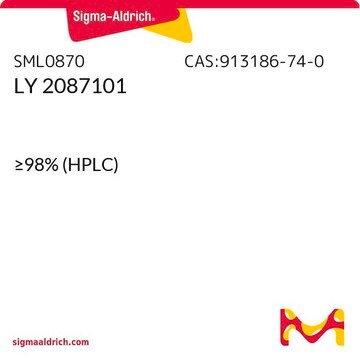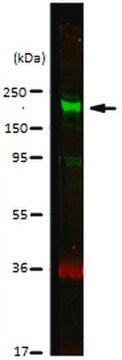MAB5260
Anti-Nerve Growth Factor Antibody, clone 27/21
clone 27/21, Chemicon®, from mouse
Synonyme(s) :
NGF
About This Item
Produits recommandés
Source biologique
mouse
Niveau de qualité
Forme d'anticorps
purified immunoglobulin
Type de produit anticorps
primary antibodies
Clone
27/21, monoclonal
Espèces réactives
human, rat, mouse, bovine
Fabricant/nom de marque
Chemicon®
Technique(s)
ELISA: suitable
Isotype
IgG1
Numéro d'accès NCBI
Numéro d'accès UniProt
Conditions d'expédition
wet ice
Modification post-traductionnelle de la cible
unmodified
Informations sur le gène
human ... NTF3(4908)
Spécificité
The antibody specifically reacts with the beta -subunit of NGF from mouse, in the 2.5S- as well as in the 7S-form.
The cross-reactivity with human NGF is 60-90 % of the reactivity with mouse NGF
Immunogène
Application
Optimal working dilutions must be determined by end user.
Neuroscience
Neurochemistry & Neurotrophins
Forme physique
Stockage et stabilité
Informations légales
Clause de non-responsabilité
Not finding the right product?
Try our Outil de sélection de produits.
Mention d'avertissement
Danger
Mentions de danger
Conseils de prudence
Classification des risques
Acute Tox. 3 Dermal - Acute Tox. 4 Inhalation - Acute Tox. 4 Oral - Aquatic Chronic 2
Code de la classe de stockage
6.1C - Combustible acute toxic Cat.3 / toxic compounds or compounds which causing chronic effects
Classe de danger pour l'eau (WGK)
WGK 3
Certificats d'analyse (COA)
Recherchez un Certificats d'analyse (COA) en saisissant le numéro de lot du produit. Les numéros de lot figurent sur l'étiquette du produit après les mots "Lot" ou "Batch".
Déjà en possession de ce produit ?
Retrouvez la documentation relative aux produits que vous avez récemment achetés dans la Bibliothèque de documents.
Notre équipe de scientifiques dispose d'une expérience dans tous les secteurs de la recherche, notamment en sciences de la vie, science des matériaux, synthèse chimique, chromatographie, analyse et dans de nombreux autres domaines..
Contacter notre Service technique










